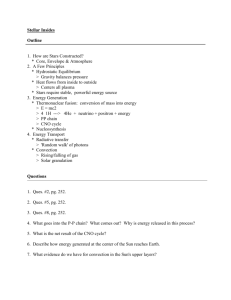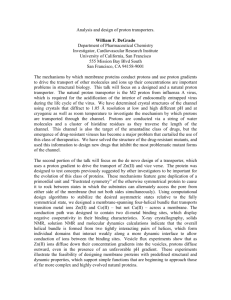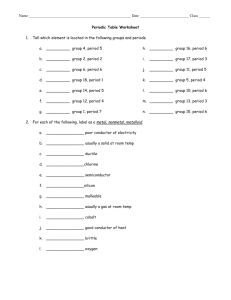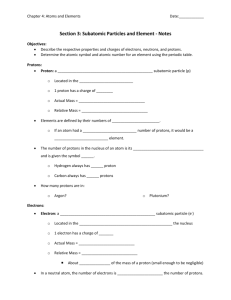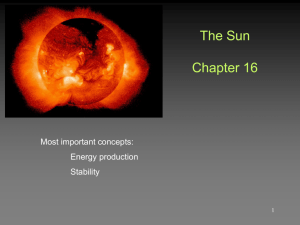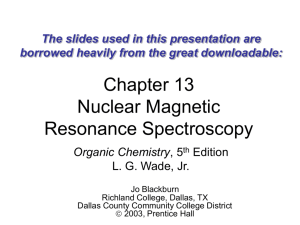C01-TOPIC- A quick look at the sun
advertisement
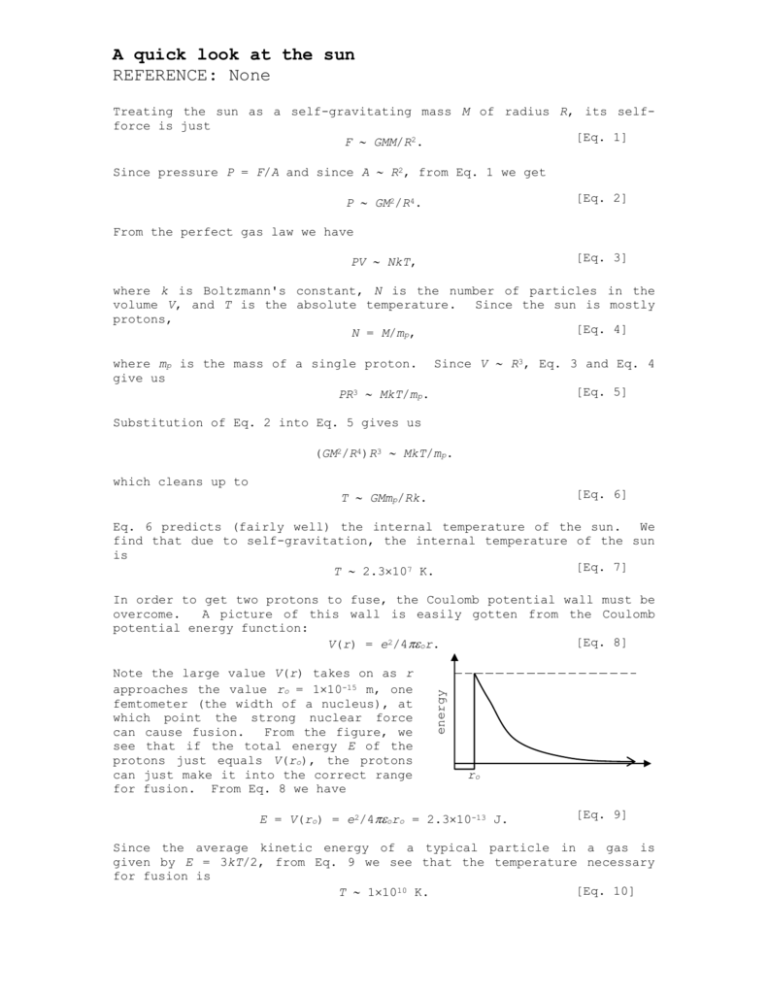
A quick look at the sun REFERENCE: None Treating the sun as a self-gravitating mass M of radius R, its selfforce is just [Eq. 1] F GMM/R2. Since pressure P = F/A and since A R2, from Eq. 1 we get [Eq. 2] P GM2/R4. From the perfect gas law we have [Eq. 3] PV NkT, where k is Boltzmann's constant, N is the number of particles in the volume V, and T is the absolute temperature. Since the sun is mostly protons, [Eq. 4] N = M/mp, where mp is the mass of a single proton. Since V R3, Eq. 3 and Eq. 4 give us [Eq. 5] PR3 MkT/mp. Substitution of Eq. 2 into Eq. 5 gives us (GM2/R4)R3 MkT/mp. which cleans up to [Eq. 6] T GMmp/Rk. Eq. 6 predicts (fairly well) the internal temperature of the sun. We find that due to self-gravitation, the internal temperature of the sun is [Eq. 7] T 2.3107 K. Note the large value V(r) takes on as r approaches the value ro = 110-15 m, one femtometer (the width of a nucleus), at which point the strong nuclear force can cause fusion. From the figure, we see that if the total energy E of the protons just equals V(ro), the protons can just make it into the correct range for fusion. From Eq. 8 we have energy In order to get two protons to fuse, the Coulomb potential wall must be overcome. A picture of this wall is easily gotten from the Coulomb potential energy function: [Eq. 8] V(r) = e2/4or. ro E = V(ro) = e2/4oro = 2.310-13 J. [Eq. 9] Since the average kinetic energy of a typical particle in a gas is given by E = 3kT/2, from Eq. 9 we see that the temperature necessary for fusion is [Eq. 10] T 11010 K. Comparing Eq. 10 to Eq. 7, it is clear that something is wrong with our analysis--the self-gravitational temperature does not appear to be high enough for fusion to occur, by a factor of 1000. Early work on sun models came up against the same problem. Studies showed, however, that the temperature of Eq. 7 was about correct, and fusion was taking place. So, how close do the protons actually come to one another at the temperature provided by self-gravity? Working backward, the distance r can be found from [Eq. 11] E = 3kT/2 = e2/4or to be [Eq. 12] r = 4.810-13 m, short by a factor of 10 to 100. How do we resolve this difficulty? The solution comes about through quantum mechanics and Heisenberg's uncertainty principle, pr h. [Eq. 13] Eq. 13 tells us the more precise one measurement is, the less precise the other is--at least to the extent that the product is h. To use Eq. 13 we need to determine p: To this end, at a temperature of T, the average kinetic energy of a proton is given by mpv2/2 = 2kT/3, so that [Eq. 14] p2 3mpkT. From Eq. 14 we see that at the temperature predicted gravitation that the average momentum of a proton is by self- p = 1.210-21 kgm/s. [Eq. 15] r 5.510-13 m. [Eq. 16] From Eq. 12 we see that at the temperature provided by selfgravitation, the protons can be pushed to within r = 4.810-13 m of each other. But because of the uncertainty principle, that distance can vary by r = 5.510-13. Thus protons can "breech" the Coulomb wall and come under the influence of the strong force, allowing fusion to take place. We call this phenomenon tunneling. energy From Eq. 13 we have ro




